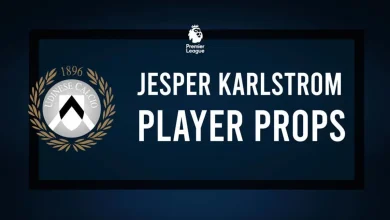Trump’s plan to end Ukraine war would cede territory to Russia

Listen to this article
Estimated 5 minutes
The audio version of this article is generated by text-to-speech, a technology based on artificial intelligence.
U.S. President Donald Trump’s plan for ending the war in Ukraine would cede land to Russia and limit the size of Kyiv’s military, according to a draft obtained Thursday by The Associated Press.
The proposal, originating from negotiations between Washington and Moscow, appeared decidedly favourable to Russia, which started the war nearly four years ago by invading its neighbour.
If past is prologue, it would seem untenable for Ukrainian President Volodymyr Zelenskyy, who has opposed Trump’s previous calls for territorial concessions.
There has also been resistance from European leaders, who are likely to decry the U.S. peace push as rewarding Russian President Vladimir Putin for his aggression, leaving him emboldened rather than defeated.
For example, the proposal would not only bar Ukraine from joining NATO but would also prevent the alliance’s future expansion. Such a step would be a significant victory for Moscow, which views NATO as a threat.
Putin would also gain ground he has been unable to win on the battlefield. Under the draft, Moscow would hold all the eastern Donbas region, even though approximately 14 per cent still remains in Ukrainian hands. Ukraine’s military, currently at roughly 880,000 troops, would be reduced to 600,000.
The proposal opens the door to lifting sanctions on Russia and returning it to what was formerly known as the Group of Eight (G8), which includes many of the world’s biggest economies.
Russia was suspended from the annual gathering in 2014 following its annexation of Crimea, a strategically important peninsula on the northern coast of the Black Sea that is internationally recognized as part of Ukraine.
More pressure on Zelenskyy
The U.S. team began drawing up the plan soon after U.S. special envoy Steve Witkoff held talks with Rustem Umerov, a top adviser to Zelenskyy, according to a senior administration official who was not authorized to comment publicly and spoke on the condition of anonymity.
The official added that Umerov agreed to the majority of the plan, after making several modifications, and then presented it to Zelenskyy.
U.S. Army Secretary Dan Driscoll was also in Kyiv on Thursday and discussed the latest draft with Zelenskyy, according to a senior administration official. Zelenskyy offered a measured statement on social media about it but did not directly speak to the substance of the proposal.
“Our teams — of Ukraine and the United States — will work on the provisions of the plan to end the war. We are ready for constructive, honest and swift work,” he wrote.
Under the proposal, Russia would commit to making no future attacks, something the White House views as a concession. In addition, $100 billion US in frozen Russian assets would be dedicated to rebuilding Ukraine.
However, handing over territory to Russia would be deeply unpopular in Ukraine. It also would be illegal under Ukraine’s constitution. Zelenskyy has repeatedly ruled out such a possibility.
Russia would also be allowed to keep half of the power generated by Europe’s largest nuclear power plant, Zaporizhzhia, which it captured from Ukraine early during the war.
WATCH | Details of Ukraine peace plan emerge:
Ukraine expected to give up land, some arms under U.S. peace plan, reports say
There are reports that the U.S. and Russia have drafted a plan that would end the war in Ukraine, but it proposes that Kyiv give up territory and some weapons.
The draft calls for a “Peace Council” that Trump will oversee. The council is an idea that Trump snatched from his lengthy peace plan aimed at bringing about a permanent end to war between Israel and Hamas in Gaza.
If either Ukraine or Russia violated the truce once enacted, it would face sanctions.
U.S. Rep. Don Bacon, of Nebraska, an air force veteran and Republican, rejected the emerging plan.
“Unacceptable,” he posted on social media.
“It is a 1938 Munich,” referring to a diplomatic agreement aimed at securing peace with Nazi Germany but widely viewed as paving the way for World War II.
European diplomats urge wider consultations
Secretary of State Marco Rubio and Witkoff have been quietly working on the peace plan for a month, receiving input from both Ukrainians and Russians on terms that are acceptable to each side, White House press secretary Karoline Leavitt said Thursday.
Witkoff and Kirill Dmitriev, a close adviser to Putin, have been key to drafting the proposal.
As reports about the draft emerged, blindsided European diplomats insisted they and Ukraine must be consulted.
European leaders have already been alarmed this year by indications that Trump’s administration might be sidelining them and Zelenskyy in its push to stop the fighting.
Trump’s at-times conciliatory approach to Putin has fueled those concerns, but Trump adopted a tougher line last month when he announced heavy sanctions on Russia’s vital oil sector that come into force Friday.





